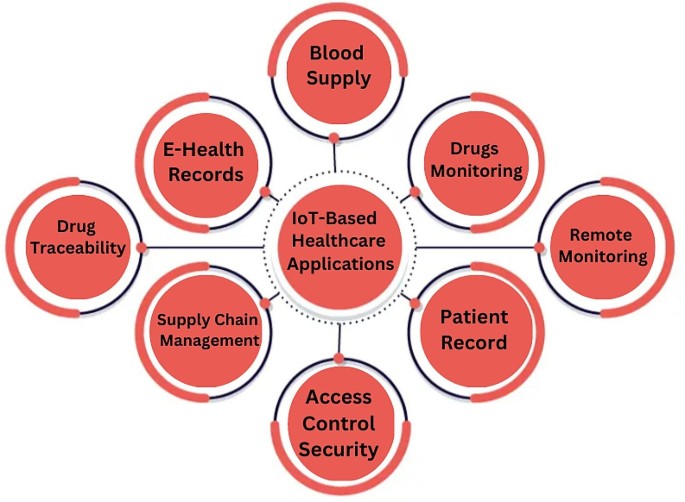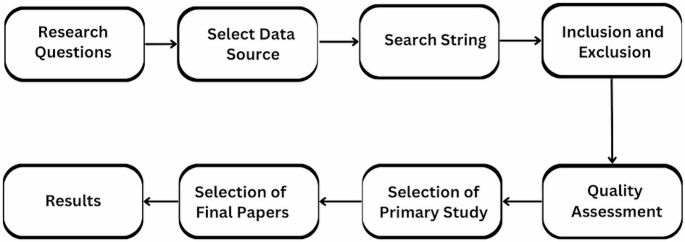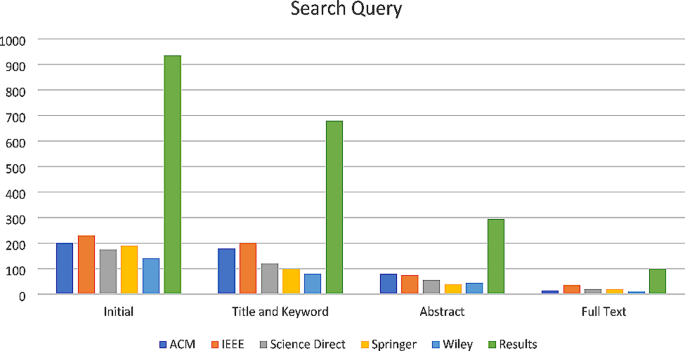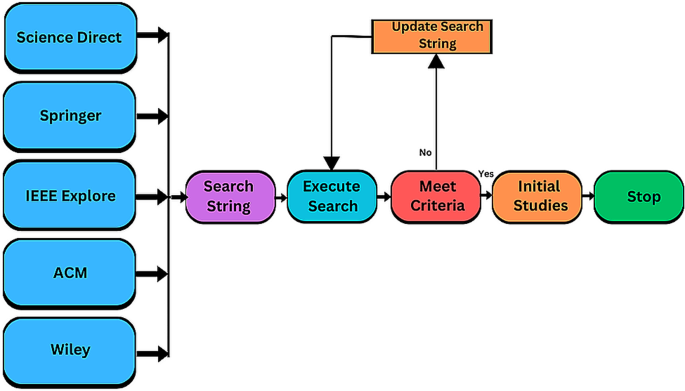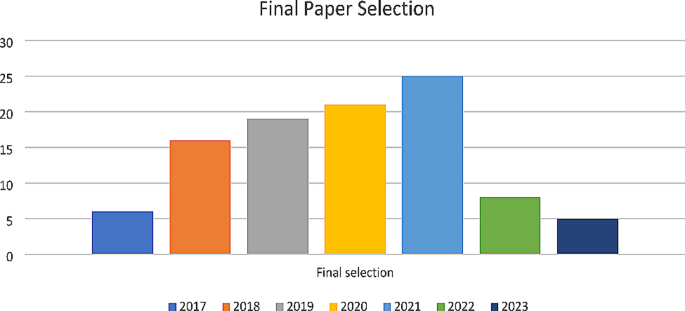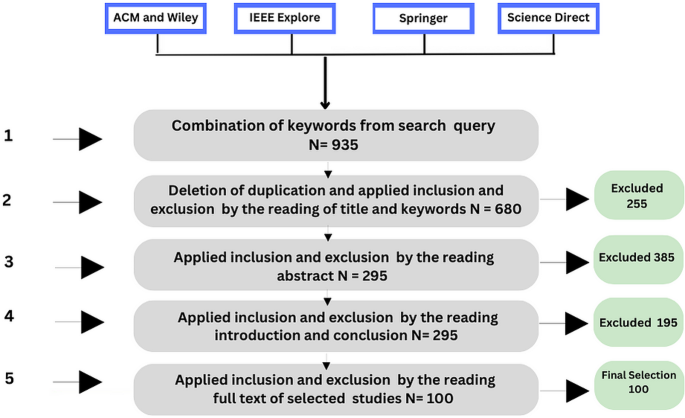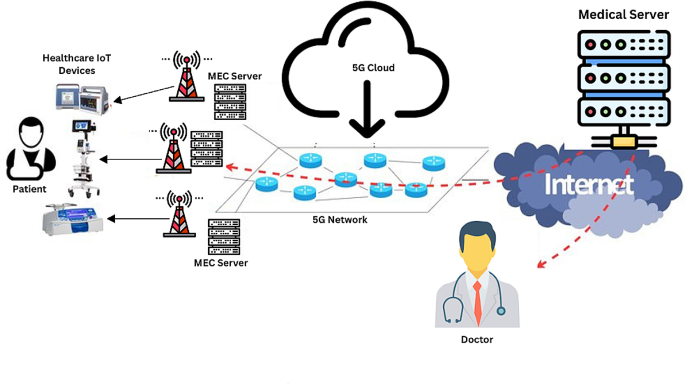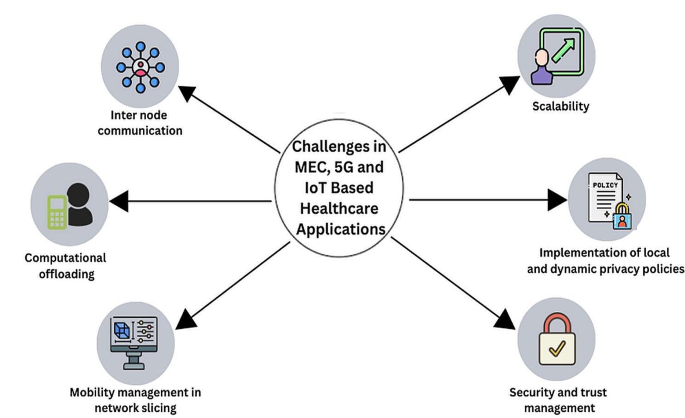- Review
- Open access
- Published:
Enhancing patient healthcare with mobile edge computing and 5G: challenges and solutions for secure online health tools
Journal of Cloud Computing volume 13, Article number: 93 (2024)
Abstract
Patient-focused healthcare applications are important to patients because they offer a range of advantages that add value and improve the overall healthcare experience. The 5G networks, along with Mobile Edge Computing (MEC), can greatly transform healthcare applications, which in turn improves patient care. MEC plays an important role in the healthcare of patients by bringing computing resources to the edge of the network. It becomes part of an IoT system within healthcare that brings data closer to the core, speeds up decision-making, lowers latency, and improves the overall quality of care. While the usage of MEC and 5G networks is beneficial for healthcare purposes, there are some issues and difficulties that should be solved for the efficient introduction of this technological pair into healthcare. One of the critical issues that blockchain technology can help to overcome is the challenge faced by MEC in realizing the most potential applications involving IoT medical devices. This article presents a comprehensive literature review on IoT-based healthcare devices, which provide real-time solutions to patients, and discusses some major contributions made by MEC and 5G in the healthcare industry. The paper also discusses some of the limitations that 5G and MEC networks have in the IoT medical devices area, especially in the field of decentralized computing solutions. For this reason, the readership intended for this article is not only researchers but also graduate students.
Introduction
The IoT or the Internet of Things has introduced a fresh concept which is using wearable devices to upgrade healthcare services [1]. Involving data communication with the environment using interrelated physical objects and sensors, IoT constitutes a complex system [2]. Not only does IoT, but also 5G technology contributed significantly to the development of cooperation-based health technology solutions. The use of remote sensing in healthcare is vast and well-established from numerous case studies and practical implementations [3].
The innovation of healthcare IoT devices, such as the ability to monitor and record patients’ medical data that including electrocardiograms (ECG), blood pressure, and pulse measurements is an area at the forefront. Apart from these internal measurements, they also take into account external indicators of health which are humidity and temperature using sensors attached to patients; the collected data are then transmitted to health centres for further analysis, including telemedicine [4].
The Internet of Medical Things (IoMT) is made up of an assortment of devices such as mobiles, sensors, and wearables all developed to extract data from patients continuously across different environments [5]. Significantly, a slight delay in transmitting information can be fatal to a patient’s life. The combination of 5G technology and cloud computing is very effective in meeting latency criteria in healthcare applications [6].
An up-to-date innovation in the field of cloud computing is the introduction of Mobile Edge Computing (MEC), which redistributes computing resources from large-scale data centres to the edge nodes in a network [7]. MEC is important for mobile healthcare devices as it allows easy access to computation power by the users themselves. In this context, it consolidates all these mobile devices, applications, and data produced within healthcare environments, enabling nearly instantaneous processing at the source level [8].
In support of healthcare devices needing uninterrupted and reliable low-latency communications (URLLC), the cooperative utilization of 5G and MEC technologies is a way to go [9]. They ensure quick and flawless transmission of information between radio network services. Even though Medical IoT devices have limited computational power, MEC architecture can handle data processing and analysis at the edge of a network avoiding central server routing [10]. Such an approach offers several advantages in terms of time efficiency, cost minimization, and operational effectiveness [11]. However, data collection within healthcare in general and patient data, in particular, has been noted to contribute useful analysis by fusing details from different points thus obtaining a holistic picture of a patient’s health status [12, 13]. Meanwhile, there are various challenges that MEC and 5G technologies must address so that healthcare systems can incorporate these technologies for the safety of patients [14]. Considering the sensitivity of health information and how it can put patients at risk if not carefully managed as well as infringe their privacy rights, security mechanisms must be embedded in MEC and IoT devices [15].
The contributions of this article are outlined as follows:
-
IoT devices enhance remote patient care, empowering physicians to monitor patient health and manage treatment plans remotely.
-
MEC and 5G networks augment patient privacy by localizing the processing of sensitive medical data, thereby reducing the exposure of raw data to public networks.
-
MEC optimizes the functioning of medical devices by offloading tasks to edge servers, which in turn improves resource utilization and treatment efficacy.
-
A significant challenge lies in securing sensitive medical information and maintaining its privacy at the network edge.
-
While blockchain has been noted for its potential in healthcare, particularly concerning security, the primary focus of this research is to elucidate the transformative impact of IoT-based healthcare devices integrated with MEC and the role of 5G technology in addressing security and privacy concerns.
The remaining article is structured as follows: Chap. 2 presents a concise literature review that acquaints readers with the historical context of IoT and MEC technology, including the emergence of 5G. Chapter 3 delineates the detailed methodology and research questions. Section 4 discusses the results and provides comprehensive responses to each question. Finally, Sect. 5 draws conclusions and suggests directions for future research.
Literature review
The Literature Review provides an in-depth examination of data offloading methods, MEC, and 5G networks, as they pertain to healthcare. Research has indicated that while mobile medical data can be transferred to the cloud for processing, analysis, and storage, the latency involved in transmitting data to remote clouds remains a concern, alongside the ongoing challenge of maintaining patient privacy [16]. These issues underscore the importance of developing more efficient and secure methods of data handling within the healthcare sector.
Advancements in mobile edge technology, as described in [17], have been shown to bring computing power closer to the user, thus improving the accessibility of information within the healthcare system. This paradigm shift towards edge computing is indicative of a broader trend of decentralization in data processing, emphasizing the proximity of computational resources to end-users.
The integration of MEC with healthcare devices has been shown to potentially revolutionize the field, as it allows for real-time data processing and analytics at the edge of the network [18]. By harnessing the power of MEC, healthcare applications can fully utilize the strengths of 5G by leveraging edge intelligence, network slicing, and distributed storage, which are pivotal for the next generation of healthcare systems [19].
Detailed examinations have been conducted on how edge and cloud computing can synergize to address operational challenges, with a special focus on optimization methods that address objectives and constraints of end-to-end application processing [20]. Security remains a paramount concern in the transmission of health data, and efforts have been made to enhance the security protocols and encryption methods to protect sensitive information [21].
Recent case studies and experiments have explored the implementation of MEC in various healthcare settings, with findings suggesting improvements in patient privacy and data latency reduction [22]. Additionally, the impact of 5G and MEC on telemedicine services has been examined, highlighting the benefits of improved remote patient monitoring and data security, though challenges related to network coverage and connectivity remain, particularly in rural and remote areas [23], as well as some technical issues [24].
It results that the current literature underscores the transformative potential of MEC and 5G in healthcare, pointing to improved efficiency, enhanced patient privacy, and increased reliability of healthcare services. However, there are still obstacles to overcome, including issues related to scalability, interoperability, and the consistent coverage of 5G networks. These challenges offer fertile ground for future research and innovation. Table 1 describes the existing literature review and key contributions and Figure 1 illustrates the IoT-based healthcare applications.
Figure 1 illustrates various IoT-based healthcare applications, demonstrating the diverse applications of these technologies in real-world healthcare settings.
Methods and techniques
The primary objective of this work is to construct a Systematic Literature Review (SLR) to identify, analyze, and gather real-world evidence on the usage of MEC in the healthcare sector and its integration with 5G networks to enhance patient care services. This study examines the healthcare sector’s advancements, particularly focusing on the contributions of MEC and 5G technologies, and how they facilitate IoT devices in healthcare systems. Additionally, it investigates the challenges faced by MEC systems and the potential solutions within the context of these technologies. The systematic review process is guided by targeted research questions, which are formulated to direct the investigation. Figure 2 illustrates the planning process of the methodology, and the specific research questions are delineated in Table 2.
The research questions of Table 2 are designed to capture the breadth and depth of the MEC and 5G application in healthcare, ensuring that the review process is comprehensive and informative. The results of this SLR will contribute to a clearer understanding of the current state of MEC and 5G technologies in healthcare and will outline the avenues for future research and development.
Select data sources
The library or repository that serves as the source for search results is called a source. The following digital libraries were selected to extract key measurements, ACM Digital Library, Springer Digital Library, Science Direct, and IEEE Explore. To access previous studies, the full text of the literature should be searched. There are many research methods when searching for relevant information in any digital library. To find relevant information, it is necessary to change the search method to meet the requirements of the resources. Table 3; Fig. 3 show the illustration of the various data sources and the number of studies generated by the search queries.
Formulate search string
A search string is a carefully constructed set of keywords and search terms to find relevant information that answers the research question being examined. At this stage, search strings are created by focusing on specific terms and keywords and their definitions selected among the research questions, as shown in Table 4. To complete the following search string, these keywords are combined using the “AND” and “OR” conditions in the order specified. Figure 4 respectively terms that affect the creation of search strings.
Define inclusion and exclusion criteria
Inclusion criteria are set to determine which studies are to be incorporated into the literature review. For this review, the following criteria have been established: All research must be published in English between 2017 and 2023. The primary focus is on the integration of MEC with 5G in the healthcare sector. To be included, a study must involve empirical research that addresses MEC, 5G, and their integration and application within healthcare. Research should also concentrate on the challenges related to MEC and 5G in the context of IoT in healthcare and their potential solutions. Only articles from reputable journals, books, or conferences are considered. Studies that do not meet these criteria are excluded. The exclusion criteria disqualify studies published before 2017 and those where the focus on MEC and 5G in the context of healthcare is of minor concern. Research lacking empirical analysis is also excluded.
Define quality assessment criteria
In systematic reviews and meta-analyses (SLRs), qualitative methods are used to assess the validity, reliability, and quality of the studies included. By applying these quality control methods, we ensure that the selected primary studies provide comprehensive information relevant to our research questions. Each study is evaluated against a set standard of quality control, which is detailed in Table 5.
Primary study selection
The term “primary study” is used to describe specific topics covered in a book that examines a research question. The tollgate approach is a five-stage structured process that has been used to select previous studies for this review. Using this method, 100 original studies were carefully selected according to quality criteria. Figure 5; Table 6 represent the main works, and Fig. 6 shows the whole process in the diagram.
Results and discussions
How do the MEC and 5G network facilitate IoT-based healthcare applications?
Healthcare applications using IoT can play an important role in monitoring and implementing various solutions. IoT devices can instantly collect patient data such as heart rate, blood pressure, and blood pressure [32]. Health apps can analyze this information and alert doctors or patients to any abnormalities and patterns that require attention. Patients with chronic diseases such as diabetes can benefit from IoT devices that constantly monitor their health. These applications can collect this information, analyze trends, and provide personalized insights and recommendations for better management [33]. IoT sensors can monitor the location and status of medical equipment to ensure efficient use and timely maintenance. IoT sensors can monitor temperature-sensitive drugs, vaccines, and blood products during storage and transportation [34]. Medical practices can instantly monitor temperature data and alert staff if temperatures fall outside acceptable ranges to keep things stable.
IoT-enabled chronic disease management helps patients with long-term health conditions such as diabetes, hypertension, and asthma track symptoms, keep their health metrics clean, and manage their business better [35]. These solutions include connected blood glucose monitors, blood pressure monitors, and spirometers, as well as mobile apps for self-management and remote monitoring. IoT-based chronic disease management can lead to better outcomes and lower healthcare costs by allowing patients to play an active role in health management [36].
Remote Patient Monitoring (RPM) solutions leverage IoT devices to remotely monitor patient vital signs, medication compliance, and other health metrics. These devices include wearable sensors, smart home monitoring systems, mobile health apps, and more [37]. Tracking patient health data in real-time allows healthcare providers to monitor patient conditions and intervene quickly if needed, leading to improved patient outcomes and reduced readmissions. The telemedicine platform uses IoT devices such as cameras, meters, and digital sensors to provide virtual consultations between patients and doctors [38]. These platforms facilitate remote diagnosis, treatment, and follow-up care, especially for rural or underserved patients. By integrating IoT sensors with telemedicine platforms, doctors can collect more information during virtual consultations, thereby improving the accuracy of diagnosis and quality of treatment [38].
IoT-based medication management helps patients adhere to medication regimens by providing alerts, dispensing medications at scheduled times, and monitoring compliance levels. These systems may include smart pill dispensers, prescription dispensers, and connected bottles. By tracking patients’ medication use in real time, doctors can detect adherence issues early and intervene to prevent medication errors or complications [39]. IoT-based asset tracking and management systems can help hospitals track the location and real-time monitoring of medical equipment, supplies, and personnel [40].
IoT sensors can also be used to monitor environmental factors such as air quality, humidity, and noise in healthcare facilities, and the environment where healthcare applications can reliably analyze this data is good for patient comfort and safety. IoT tags on surgical instruments can track their use, sterilization, and location in the hospital. Medical practices can reduce the risk of delays and errors in surgery by providing quick information on available equipment [41].
5G technology in wireless communication is the new generation of mobile phones. Among all existing mobile networks, 5G provides a high-speed network to everyone, anytime, anywhere. 5G is a bit different because of its new capabilities to connect people, and manage devices, equipment, and technology [42]. The category of 5G technology Enhance mobile broadband (eMBB) is a key application for 5G systems, which use massive multiple input, multiple output (MIMO) antennas, millimeter wave, and beamforming technology to deliver ultra-high-speed connectivity over large areas.
URLLC is another category of 5G networks that provides low latency, ultra-high reliability, and rich quality of service (QoS) that cannot be achieved with traditional mobile network architecture. URLLC is designed for on-demand real-time interaction such as remote surgery, vehicle-to-vehicle (V2V) communication, industry 4.0, smart grids, and intelligent transport systems. URLLC is designed for real-time needs such as remote surgery, vehicle-to-vehicle (V2V) connectivity, Industry 4.0, smart grids, and transportation systems. Another category of 5G network is Massive Machine Type Communications (MMTC) which enables long-range communications at very cost-effective and low power consumption.
MMTC provides high data services, low power consumption, and connectivity to IoT applications at lower costs for mobile users [43]. MMTC is used for high-speed connections between low-speed devices such as healthcare devices. MEC is an advanced version of cloud computing. It is designed to bring the power of cloud services closer to the user. When we think about IT, the first thing that comes to our mind is cloud computing, which is a well-known technology that offers many services to end users. MEC is the underlying technology that accommodates URLLC service latency. 5G can also rely on a variety of services that can be provided through network connections from different industries [44].
One of the key points of 5G is the network slicing that enables the work that needs to be done and resources are distributed using services to different services or tenants from the work available in the network. Network slicing creates multiple logical connections that meet specific needs. Network Slice Selection Function (NSSF) is a function that helps users select the appropriate network and deploy appropriate Access Management Functions (AMF). A MEC application located in the decentralized cloud of the MEC system can participate in one or more network connections established in the 5G core network [45].
To address the complexity of medical data transfer from patient wearable devices, 5G network slicing is becoming a catalyst for IoT innovation leading to new products and services in the medical field [46]. The combination of 5G and MEC can support applications and use cases that require reliable low-latency communications (URLLC). 5G wireless systems with MEC provide instant, low-latency, high-bandwidth access to radio network services. Medical IoT devices have limited computing power and cannot run demanding algorithms. In MEC architecture, the medical device offloads the epilepsy detection task to MEC servers [47].
Offloading to MEC servers is the process of moving some computing functions of mobile devices or endpoints to servers at the edge of the network [48]. Medical device outsourcing involves moving some computing functions or data processing from the medical device itself to other computing applications, such as MEC servers. This approach has many benefits regarding time efficiency, cost savings, and operational efficiency [49]. MEC servers use computing power at the edge of the network to collect and process data. Offloading can be used if the medical device has sufficient computing power to save device power and reduce task latency [50]. Energy saving is crucial for medical IoT devices that require long service life. Figure 7 shows the MEC architecture and its role in healthcare devices.
5G networks provide faster and more efficient data transfer. This means healthcare IoT devices can send and receive data quickly, allowing them to operate in a low-power state in less time [51]. MEC servers reduce data processing latencies by moving power consumption closer to the edge of the network. In healthcare applications, especially sensor-based applications, low latency is important for instant monitoring and decision-making [52]. MEC allows healthcare services to quickly process data without sending it remotely to cloud computing, resulting in faster response times. MEC servers enable local analysis and data collection. This reduces the risk of sending sensitive data long distances and provides greater control over the personal data of patients [19, 53]. MEC servers usually have local storage capacity. MEC servers can store patient data directly on edge servers rather than relying on centralized cloud storage. This local storage provides rapid access to frequently requested patient information without the need to retrieve information from remote cloud servers [54].
What are the challenges in MEC and 5G networks in IoT Healthcare applications?
MEC and 5G networks present advanced potential to empower IoT healthcare applications [55]. Nonetheless, these technologies face several challenges that must be addressed to maximize their benefits in healthcare. Addressing these challenges will necessitate collaboration among technology developers, healthcare providers, regulators, and other stakeholders. Solutions may involve technological advancements, design improvements, and the establishment of best practices to ensure successful integration of MEC and 5G networks into IoT applications. Below are the key challenges identified, and Fig. 8 illustrates these challenges in the context of MEC and IoT-based healthcare applications.
Inter nodes communication
The challenge of backhaul access in MEC and 5G networks involves ensuring robust connections among the MEC servers and the core network. As medical applications require high data transfer rates and increased numbers of connected devices, the backhaul networks need to be capable of handling significant bandwidth and capacity [56]. Addressing insufficient bandwidth is critical to prevent congestion, latency, and poor performance in healthcare IoT applications utilizing MEC and 5G networks. Moreover, healthcare applications demand real-time communication and data processing, making low-latency communication between nodes crucial for applications such as remote surgery and patient monitoring [57,58,59,60].
Computational offloading
In 5G networks and MEC environments, computational offloading decisions are pivotal. Deciding whether to process data at the edge or transfer it to a central cloud entails balancing latency, bandwidth, and cost. Improper offloading decisions can negatively affect performance and increase latency [61]. The challenge is to optimally allocate computing tasks to either the edge or local devices to ensure efficient resource utilization and minimize unnecessary data transfers [62].
.
Mobility management in network slicing
Network slicing, a pivotal feature of 5G, allows the creation of virtualized, dedicated network segments tailored to specific services [63]. Efficient mobility management between these slices is challenging, especially when ensuring uninterrupted service delivery for delay-sensitive medical applications such as remote monitoring [64]. Maintaining communication quality amidst changes in signal strength and minimizing interference are crucial to the success of 5G in healthcare applications [65].
Scalability
Scalability is a significant challenge for MEC and 5G networks, particularly concerning the capability of the system to accommodate an increasing number of devices, scale data volumes, and meet growing demand [80]. Scalability issues can lead to bottlenecks and reduced system efficiency, thereby impacting the real-time functionality of healthcare services [66,67,68].
Security and trust management
Solving security and trust issues comes through implementing a security framework that includes access, authentication, authorization, secure communication, and continuous monitoring [69]. Privacy breaches can lead to serious consequences, including identity theft, unauthorized access to medical information, and loss of patient trust [70]. Protecting medical information from unauthorized access and ensuring patient confidentiality is very difficult. Ensuring the integrity of medical records is crucial to prevent unauthorized falsification or alteration. Data integrity measures should be taken to detect and respond to adverse changes [71]. Attackers attack critical network or computing resources by sending requests at a faster rate than the MEC server can process, preventing other nodes from accessing the resources [72]. It is important to select and implement secure communication protocols between devices, edge servers, and the cloud in the middle. This includes protecting data during transmission and preventing man-in-the-middle attacks [73].
Implementation of local and dynamic privacy policies
Privacy policies for medical applications should be considered in the local context and consider factors such as region-specific regulations, cultural norms, and user preferences [74]. In the current system, privacy policies and guidelines are predefined at a global level and static over time. There is a need to find a mechanism to implement local and dynamic data protection policies. Failure to take local context into account can lead to non-compliance, ethical concerns, and potential user resistance due to cultural differences [75]. Failure to consider user-centric privacy can lead to a lack of user trust, reluctance to share data, and potential legal and ethical issues [76]. Existing privacy policies and guidelines in IoT systems need to be modified to support the adaptation of new technologies such as MEC. Inefficient use of edge computing to maintain privacy can lead to unnecessary data leakage and privacy risks [49].
Drawbacks of current technologies in healthcare
Current Technologies in Healthcare While discussing the potential of MEC and 5G in healthcare, it is crucial to acknowledge the challenges these technologies may face. For instance, the significant amount of data processed by these networks can cause delays, impacting the speed and efficiency of healthcare delivery [77]. Scalability solutions, such as distributed computing and network optimizations, are needed to ensure real-time data processing and timely access to patient information, which is critical for medical decisions.
The Implementation of MEC and 5G technologies must adhere to stringent data protection laws to safeguard patient privacy and prevent unauthorized access to medical information [78]. Developing strategies for integration with existing healthcare systems is essential for seamless interoperability and data exchange, requiring concerted efforts in terms of resources and development of middleware solutions and APIs [79].
Conclusion and future work
5G-MEC integration in the field of Internet of Things has opened up new ways for its deployment, notably in the health care industry. Both of these technologies are instrumental in delivering real-time, accurate medical data analysis and inter-device communication. Unfortunately, despite enormous potential, there are some operational difficulties limiting this promising collaboration.
The introduction of MEC and 5G technologies into the healthcare sector plays a crucial role in the development of patient care due to their advanced data management capabilities and improved connectivity for medical devices. Nevertheless, the implementation of these technologies is not devoid of challenges. Barriers such as scalability, data protection, and network stability remain an issue today.
An important area for future research is to find ways how these barriers can be overcome, given the comprehensive network of data flowing in a complicated systems environment; this includes, but is not limited to, developing effective security protocols and creating adaptive infrastructure that can handle the skyrocketing volume of data from contemporary healthcare applications.
In order to achieve optimal MEC and 5G, research needs to be a continuous process. One of the efforts should be simplified data transmission and processing while maintaining patient data privacy and system security at the highest level.
A pressing need exists for the evolution of novel technologies in support of health information systems that are responsive to the increasing sophistication of clinical networks. Not only will this serve as a means to safeguard patient records, but it will also keep health care delivery in line with advances in technology.
Dealing with these challenges will be an impetus for change, not only in the health system: as a result, it may transform the methods of care delivery, monitoring, and treatment management; this would contribute to enhancing global patients’ outcomes.
The process of developing these technologies continues. It portends the era where the health care system will be highly interconnected, efficacious, and trusted and make a tremendous contribution to those involved in caring as well as to those cared for.
Data availability
Not applicable.
References
Bhatt Y, Bhatt C (2017) Internet of things in healthcare Internet of things and big data technologies for next generation HealthCare, : pp. 13–33
Shafiq M et al (2022) The rise of internet of things: review and Open Research issues related to detection and Prevention of IoT-Based security attacks. Wirel Commun Mob Comput. https://doi.org/10.1155/2022/8669348
Amani M et al (2020) Google earth engine cloud computing platform for remote sensing big data applications: a comprehensive review. IEEE J Sel Top Appl Earth Observations Remote Sens 13:5326–5350
Taiwo O, Ezugwu AE (2020) Smart healthcare support for remote patient monitoring during covid-19 quarantine. Inf Med Unlocked 20:100428
Shafiq M et al (2023) Advances in IoMT for Healthcare System. Sensors. https://doi.org/10.3390/s24010010
Balasundaram A et al (2023) Internet of things (IoT) based smart healthcare system for efficient diagnostics of health parameters of patients in emergency care. IEEE Internet Things J
Pham Q-V et al (2020) A survey of multi-access edge computing in 5G and beyond: fundamentals, technology integration, and state-of-the-art. IEEE Access 8:116974–117017
Mao Y et al (2017) Mobile edge computing: Survey and research outlook arXiv preprint arXiv:1701.01090, : pp. 1–37
Siddiqi MA, Yu H, Joung J (2019) 5G ultra-reliable low-latency communication implementation challenges and operational issues with IoT devices. Electronics 8(9):981
Liu Y et al (2020) Toward edge intelligence: Multiaccess edge computing for 5G and internet of things. IEEE Internet Things J 7(8):6722–6747
Kumar SM, Majumder D (2018) Healthcare solution based on machine learning applications in IOT and edge computing. Int J Pure Appl Math 119(16):1473–1484
Premsankar G, Di Francesco M, Taleb T (2018) Edge computing for the internet of things: a case study. IEEE Internet Things J 5(2):1275–1284
Rajeswari D et al (2024) Structural health monitoring of aircraft through prediction of delamination using machine learning. PeerJ Computer Science, 10:e1955, 35 pages, doi.org/https://doi.org/10.7717/peerj-cs.1955
Jagadeeswari V et al (2018) A study on medical internet of things and Big data in personalized healthcare system. Health Inform Sci Syst 6:1–20
Malik S et al (2022) Intelligent Load Balancing Framework for Fog enabled Communication in Healthcare. Electronics https://doi.org/10.3390/electronics11040566
Sajjad M et al (2022) Efficient Joint Key Authentication Model in E-Healthcare. CMC-Computers Mater Continua 71:2739–2753. https://doi.org/10.32604/cmc.2022.022706
He Q et al (2023) A blockchain-based scheme for secure data offloading in healthcare with deep reinforcement learning. IEEE/ACM Transactions on Networking
Tlemçani K et al (2023) An Advanced IoT-Based Architecture for Healthcare Systems: A Focus on Blockchain-based Edge Computing for Diabetes Management. in Proceedings of the 6th International Conference on Networking, Intelligent Systems & Security
Zhang Y et al (2020) Real-time remote health monitoring system driven by 5G MEC-IoT. Electronics 9(11):1753
Saeik F et al (2021) Task offloading in Edge and Cloud Computing: a survey on mathematical, artificial intelligence and control theory solutions. Comput Netw 195:108177
Saha R et al (2019) Privacy ensured ${e} $-healthcare for fog-enhanced IoT based applications. IEEE Access 7:44536–44543
Abdellatif AA et al (2019) Edge computing for smart health: context-aware approaches, opportunities, and challenges. IEEE Network 33(3):196–203
Roddy M et al (2019) 5G Network Slicing for Mission-critical use cases. 2019 IEEE 2nd 5G World Forum (5GWF). IEEE
Shafiei A et al (2021) A hybrid technique based on a genetic algorithm for fuzzy multiobjective problems in 5G, internet of things, and Mobile Edge Computing. Math Probl Eng. https://doi.org/10.1155/2021/9194578
Ranaweera P, Jurcut A, Liyanage M (2021) MEC-enabled 5G use cases: a survey on security vulnerabilities and countermeasures. ACM Comput Surv (CSUR) 54(9):1–37
Awad AI et al (2022) Utilization of mobile edge computing on the internet of Medical things: a survey. ICT Ex
Bishoyi PK, Misra S (2022) Towards energy-and cost-efficient sustainable MEC-assisted healthcare systems. IEEE Trans Sustainable Comput 7(4):958–969
Khan R et al (2019) A survey on security and privacy of 5G technologies: potential solutions, recent advancements, and future directions. IEEE Commun Surv Tutorials 22(1):196–248
Ning Z et al (2020) Mobile edge computing enabled 5G health monitoring for internet of medical things: a decentralized game theoretic approach. IEEE J Sel Areas Commun 39(2):463–478
Pustokhina IV et al (2020) An effective training scheme for deep neural network in edge computing enabled internet of medical things (IoMT) systems. IEEE Access 8:107112–107123
Al-Janabi S et al (2017) Survey of main challenges (security and privacy) in wireless body area networks for healthcare applications. Egypt Inf J 18(2):113–122
Ahmed A et al (2022) IoT-based real-time patients vital physiological parameters monitoring system using smart wearable sensors. Neural Comput Appl 34(22):19397–19673
Mohammed K et al (2019) Real-time remote-health monitoring systems: a review on patients prioritisation for multiple-chronic diseases, taxonomy analysis, concerns and solution procedure. J Med Syst 43:1–21
Bengiovanni T et al (2020) Risk management and healthcare: Iot technologies and smart monitoring system for a good cold chain management. in. 5th International Conference on Smart and Sustainable Technologies (SpliTech). 2020. IEEE
Dadkhah M et al (2021) Use of internet of things for chronic disease management: an overview. J Med Signals Sens 11(2):138–157
Pradhan B, Bhattacharyya S, Pal K (2021) IoT-based applications in healthcare devices. J Healthc Eng 2021:1–18
Malviya R, Goyal P (2023) Remote patient monitoring: a computational perspective in Healthcare. CRC
Albahri AS et al (2021) IoT-based telemedicine for disease prevention and health promotion: state-of-the-art. J Netw Comput Appl 173:102873
Raisa FF et al (2023) IoT based medicine dispenser for improving medication adherence
Tsai M-H et al (2019) RFID medical equipment tracking system based on a location-based service technique. J Med Biol Eng 39:163–169
Ojuka DK, Okutoyi L, Otieno FC (2019) Communication in surgery for patient safety, in Vignettes in Patient Safety-Volume 4. IntechOpen
Dangi R et al (2021) Study and investigation on 5G technology: a systematic review. Sensors 22(1):26
Sharma V et al (2018) Self-enforcing game theory-based resource allocation for LoRaWAN assisted public safety communications arXiv preprint arXiv:1804.07204
Kekki S et al (2018) MEC in 5G networks. ETSI White Paper 28(2018):p1–28
Vittal S, Singh MK, Franklin AA (2020) Adaptive network slicing with multi-site deployment in 5G core networks. in 6th IEEE Conference on Network Softwarization (NetSoft). 2020. IEEE
Jain H, Chamola V, Jain Y (2021) 5G network slice for digital real-time healthcare system powered by network data analytics. Internet Things Cyber-Physical Syst 1:14–21
Hayyolalam V et al (2021) Edge-assisted solutions for IoT-based connected healthcare systems: a literature review. IEEE Internet Things J 9(12):9419–9443
Guo H et al (2018) Mobile-edge computation offloading for ultradense IoT networks. IEEE Internet Things J 5(6):4977–4988
Porambage P et al (2018) Survey on multi-access edge computing for internet of things realization. IEEE Commun Surv Tutorials 20(4):2961–2991
Islam A et al (2021) A survey on task offloading in multi-access edge computing. J Syst Architect 118:102225
Ahad A et al (2020) Technologies trend towards 5G network for smart health-care using IoT: a review. Sensors 20(14):4047
Alsiddiky A et al (2020) Priority-based data transmission using selective decision modes in wearable sensor based healthcare applications. Comput Commun 160:43–51
Mazhar T et al (2022) The role of ML, AI and 5G technology in smart energy and smart building management. Electronics 11(23):3960
Nguyen DC et al (2020) Blockchain and edge computing for decentralized EMRs sharing in federated healthcare. in GLOBECOM 2020–2020 IEEE Global Communications Conference. IEEE
Bishoyi PK, Misra S (2021) Enabling green mobile-edge computing for 5G-based healthcare applications. IEEE Trans Green Commun Netw 5(3):1623–1631
Deepa T, Chitra Kiran N (2019) A comprehensive research study on 5G backhauling: solutions, requirements and challenges. Commun Appl Electron 7(26):25–31
Nadeem L et al (2021) Integration of D2D, network slicing, and MEC in 5G cellular networks: Survey and challenges. IEEE Access 9:37590–37612
Peralta-Ochoa AM et al (2023) Smart Healthcare applications over 5G networks: a systematic review. Appl Sci 13(3):1469
Khujamatov K et al (2022) Device-to-device and millimeter waves communication for 5G healthcare informatics, in Blockchain Applications for Healthcare Informatics. Elsevier, pp 181–211
Ma Z et al (2019) High-reliability and low-latency wireless communication for internet of things: challenges, fundamentals, and enabling technologies. IEEE Internet Things J 6(5):7946–7970
Nencioni G, Garroppo RG, Olimid RF 5G multi-access edge computing: security, dependability, and performance arXiv preprint arXiv:2107.13374, 2021
Pereira RS et al (2020) RELIABLE: resource allocation mechanism for 5G network using mobile edge computing. Sensors 20(19):5449
Foukas X et al (2017) Network slicing in 5G: Survey and challenges. IEEE Commun Mag 55(5):94–100
Vecchiato R et al (2019) Technology foresight for growth and productivity: the design and implementation of a new foresight approach for UK SMEs
Spinelli F, Mancuso V (2020) Toward enabled industrial verticals in 5G: a survey on MEC-based approaches to provisioning and flexibility. IEEE Commun Surv Tutorials 23(1):596–630
Zyrianoff I et al (2018) Scalability of real-time iot-based applications for smart cities. in 2018 IEEE Symposium on Computers and Communications (ISCC). IEEE
Bolettieri S, Bruno R, Mingozzi E (2021) Application-aware resource allocation and data management for MEC-assisted IoT service providers. J Netw Comput Appl 181:103020
Siriwardhana Y et al (2021) A survey on mobile augmented reality with 5G mobile edge computing: architectures, applications, and technical aspects. IEEE Commun Surv Tutorials 23(2):1160–1192
Tewari A, Gupta BB Security, privacy and trust of different layers in Internet-of-Things (IoTs) framework Future generation computer systems, 2020. 108: pp. 909–920
Keshta I, Odeh A (2021) Security and privacy of electronic health records: concerns and challenges. Egypt Inf J 22(2):177–183
Nowak TW et al (2021) Verticals in 5G MEC-use cases and security challenges. IEEE Access 9:87251–87298
Deng Y et al (2022) Resource provisioning for mitigating edge DDoS attacks in MEC-enabled SDVN. IEEE Internet Things J 9(23):24264–24280
Sabella D et al (2021) MEC security: Status of standards support and future evolutions. ETSI White Paper 46:1–26
Alahmari N et al (2023) Autonomous and Sustainable Service economies: Data-Driven optimization of Design and Operations through Discovery of Multi-perspective parameters. Sustainability 15(22):16003
Trakadas P et al (2019) Hybrid clouds for data-intensive, 5G-enabled IoT applications: an overview, key issues and relevant architecture. Sensors 19(16):3591
Bou Abdo J (2021) Prise de décision commerciale pour l’adoption du cloud computing: facteurs économiques et organisationnels. université Paris-Saclay
Khan D, Jung LT, Hashmani MA (2021) Systematic literature review of challenges in blockchain scalability. Appl Sci 11(20):9372
Yaqoob I et al (2022) Blockchain for healthcare data management: opportunities, challenges, and future recommendations. Neural Comput Appl, : p. 1–16
Baldimtsi F et al (2024) zkLogin: Privacy-Preserving Blockchain Authentication with Existing Credentials arXiv preprint arXiv:2401.11735
Funding
This work is supported by the research fund of the University of Johannesburg, South Africa.
Author information
Authors and Affiliations
Contributions
All authors have equal contribution.
Corresponding authors
Ethics declarations
Conflict of interest
Not applicable.
Additional information
Publisher’s Note
Springer Nature remains neutral with regard to jurisdictional claims in published maps and institutional affiliations.
Rights and permissions
Open Access This article is licensed under a Creative Commons Attribution 4.0 International License, which permits use, sharing, adaptation, distribution and reproduction in any medium or format, as long as you give appropriate credit to the original author(s) and the source, provide a link to the Creative Commons licence, and indicate if changes were made. The images or other third party material in this article are included in the article’s Creative Commons licence, unless indicated otherwise in a credit line to the material. If material is not included in the article’s Creative Commons licence and your intended use is not permitted by statutory regulation or exceeds the permitted use, you will need to obtain permission directly from the copyright holder. To view a copy of this licence, visit http://creativecommons.org/licenses/by/4.0/.
About this article
Cite this article
Ghadi, Y.Y., Shah, S.F.A., Mazhar, T. et al. Enhancing patient healthcare with mobile edge computing and 5G: challenges and solutions for secure online health tools. J Cloud Comp 13, 93 (2024). https://doi.org/10.1186/s13677-024-00654-4
Received:
Accepted:
Published:
DOI: https://doi.org/10.1186/s13677-024-00654-4
